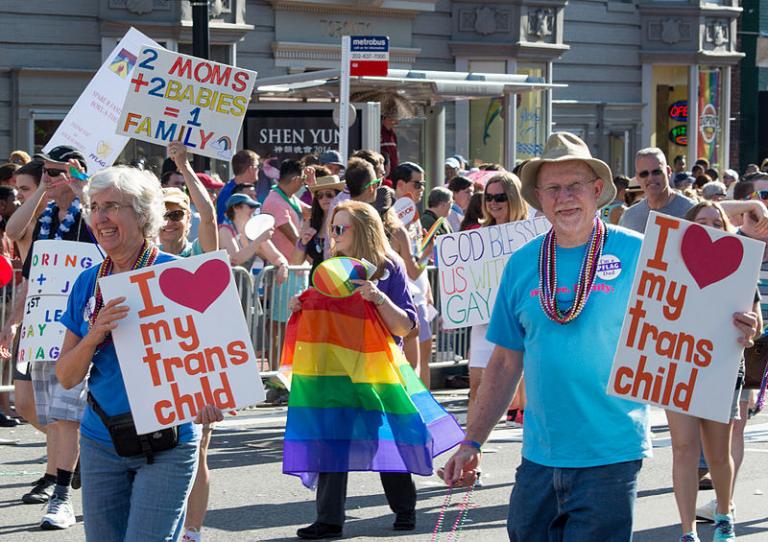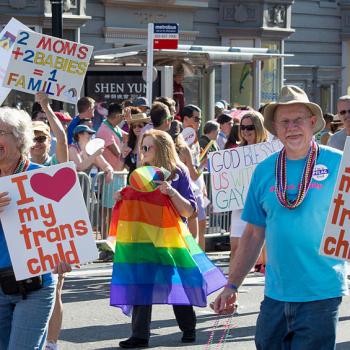
Yes, I’m going there: it’s time to address the “transkid” issue — hopefully with an angle that will provide a different perspective on a debate where, at least here in Illinois, so-called “gender affirming care” is now the law of the land, justified by the refrain that it is “lifesaving” — because, after all,
“Would you rather have a dead daughter or a living son?”
is the question that’s been posed to parents of girls who begin identifying as transgender, as a means of pressuring them to support administration of cross-sex hormones and even surgery to acquire male sex characteristics/eliminate female ones, because, it’s asserted, without these interventions, those girls (or boys) would be at such a high risk of suicide that the avoidance of suicide trumps all other considerations.
But consider this:
In 2007, health researcher and New America Foundation senior fellow Shannon Brownlee published Overtreated: Why Too Much Medicine is Making Us Sicker and Poorer. Its (seeming lack of) effect on the health care debate (at least in the general public) since then might be illustrated by the fact that, in order to reread the book, I had to request it from Interlibrary Loan, because only two copies existed in my local library’s partner library system, the original copy owned by my library having been de-accessed sometime between then and now. Or perhaps my local library simply has a faulty de-accession policy – which is admittedly another story.
In any event, what particularly stuck with me since first reading the book was Brownlee’s description of the debacle of “high-dose chemotherapy with autologous bone marrow transplant” as a treatment for breast cancer. This treatment was developed in the 1980s based on a similar treatment for leukemia: in order maximize the effectiveness of chemotherapy for breast cancer, a patient’s bone marrow was harvested, then the patient was given chemotherapy dosages so high as to destroy the bone marrow, the previously-harvested bone marrow was re-transfused, and finally the patient was kept in isolation until the bone marrow regrew (unless chemo side effects or infections killed them first). The chemo shrunk tumors in cases that otherwise seemed hopeless, and 18-month survival rates were impressive. Then, in the 1990s, a series of lawsuits against insurance companies, including a 1993 lawsuit with $89 million in damages, “threw open the legal floodgates”; mandated insurance coverage of a highly-profitable procedure meant ever-growing numbers of women undergoing this treatment and ever-growing numbers of doctors and hospitals churning women through their process.
Yet there was no evidence that this was an effective procedure. Instead, the data that was being cited as “proof” was a comparison of success rates compared to conventional treatments, but it was not a randomized trial with a control group. Without selecting the control group randomly, results of a study are not valid; for example, women undertaking the bone marrow transplant treatment might be in overall better health than others, because they would be more likely to be judged able to survive it. And it took until the end of that decade, in 1999, for results from those clinical trials to be made available – results which revealed that, considering both risks of dying during treatment and survival afterwards, more women died after this new treatment than the alternative.
Why did the medical community adopt this treatment without evidence? Brownlee provides several pieces to an explanation. First, oncologists reasoned by analogy from leukemia treatment without recognizing the differences between this and breast cancer. Second, oncologists were not trained in statistical analysis and didn’t understand that the apparent proof they relied on was not reliable evidence at all. Third, the treatment was incredibly profitable. Fourth, the very fact that the treatment was so risky and difficult to endure added to the perception that it had to be better. And, ultimately, once it became accepted as a treatment, doctors were unwilling to participate in random trials because their conviction of the effectiveness of the transplant meant they deemed it unethical not to provide it, as would be required in a random trial.
Why does this matter?
I revisited this because of its parallels to so-called “gender-affirming care,” especially for children and teenagers, in the form of social transition, puberty blockers, cross-sex hormones, and surgeries, which such institutions as the American Academy of Pediatricians and, locally, Lurie Children’s Hospital will readily state is the standard of care for those questioning their gender or believing themselves to be of the opposite sex from their birth sex.
As with the bone marrow transplant, experts have become convinced that these treatments are the “best” care and are “lifesaving,” and as with the bone marrow transplant, there is no evidence. Studies touted as proving the effectiveness of these treatments lack control groups, follow up on patients for too-brief periods, and fail to consider the effect of other factors, such as pre-existing mental health issues. (Folks, I intended to dig up the links to the “bad studies” in order to document this, but you’ll just have to trust me as I don’t want to keep this sitting in my drafts folder.)
So, to “gender affirming care” supporters, I would like to say: please take a step back. Recognize that a desire to be on the “right side” of a culture war isn’t a good basis for supporting children making permanent changes to their bodies with lifelong consequences and serious risks, and that proper evidence is absolutely vital. Women died because doctors rushed into breast-cancer stem cell transplants without valid evidence. We should learn from that mistake rather than repeat it over and over again.
And to opponents: I read a lot of accusations that progressives’ support of child sex transitions is nefarious, rooted in pedophilia, transhumanism, Marxism, or other “isms”. But it seems to me that, for many such supporters, especially your typical suburban mom with the “Pride Progress” flag in her flower bed or Facebook profile picture, but also, likely, many of the folks touting themselves as “experts,” there’s nothing at all nefarious. It’s just that it is all too easy to become convinced of the rightness of a treatment once, for whatever reason, it has become the norm.
Image: https://commons.wikimedia.org/wiki/File:PFLAG_of_the_Lower_Shenandoah_07_-_DC_Capital_Pride_-_2014-06-07.jpg; Tim Evanson [CC BY-SA 2.0 (https://creativecommons.org/licenses/by-sa/2.0)], via Wikimedia Commons










